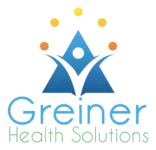
Toxic From Birth
"How is it that a child can be diagnosed with such a serious disease like cancer if it isn't genetic?"
That's probably one of the most common questions I get when the discussion of genes comes up. We're getting sicker younger and younger these days and it's alarming to say the least. What we DO know is that we're unknowingly bombarding ourselves and our unborn children with toxins. Most of these toxins are known carcinogens and are being found in high levels in their little bodies.
In the 4 or so weeks leading up to a baby's birth, the umbilical cord pulses the equivalent of 300 quarts of blood per day. It's pumped back and forth from the placenta to the child in a sac of amniotic fluid. The umbilical cord is literally the lifeline between mother and baby.
During this time, organs, vessels, membranes and systems are being knit together from single cells to a finished organism. The umbilical cord not only carries the building blocks of life, but also a steady stream of toxins in the forms of pollutants, chemicals and pesticides that cross the placenta. This is the human body burden - the pollution in people and babies.
A study done by the Environmental Working Group in collaboration with Commanwealth, investigated the amount of these toxins found in umbilical cords. The results were nothing short of scary. Researchers at two major laboratories found an average of 200 industrial chemicals and pollutants in umbilical cord blood. Tests revealed a total of 287 chemicals in the group. The blood was collected by Red Cross after the cord was cut, harbored pesticides, consumer product ingredients and wastes from burning coal gasoline, and garbage.
Of the 287 chemicals detected in umbilical cord blood, 180 are known to cause cancer in humans and animals, 217 are toxic to the brain and nervous system, and 208 cause birth defects or abnormal development in animal tests.
The chemicals and pollutants detected were:
* Mercury: pollutant from coal-fired power plants, mercury containing products, and industrial processes. Mercury is also found in amalgam fillings.
* Polyaromatic hydrocarbons (PAHs): pollutants from burning gasoline and garbage. Linked to cancer and accumulates in food chain.
* Polybrominated dibenzodioxins and furans (PBDD/F): Contaminants in brominated flame retardants. Pollutants and byproducts from plastic production and incineration. Toxic to developing endocrine system.
* Perfluorinated chemicals (PFCs): active ingredients or breakdown of teflon, scotchgard, fabric and carpet protectors, food wrap coatings. Global contaminants. Accumulate in the environment and food chain. Linked to cancer, birth defects and more.
* Organochlorine pesticides (OCs): DDT, chlordane and other pesticides. Largely banned in the U.S. but persisted for decades in the environment. Accumulates in food chain and is known to cause cancer and negative reproductive effects.
* Polybrominated diphenyl ethers (PBDEs): flame retardant in furniture foam, computers, and televsions. Accumulates in the food chain and human tissue. Adversely affects the brain development and thyroid.
* Polychlorinated Napthalenes (PCNs): Wood perservatives, varnishes, machine lubricating oils, waste incineration. Common PCB contaminant. Contaminates food chain and causes liver and kidney damage.
* Polychlorinated biphenyls (PCBs): Industrial insulators and lubricants. Banned in the U.S. in 1976. Persisted for decades in the environment. Accumulates up the food chain, to man. Causes cancer and nervous system disorders.
Source: Chemical analyses of 10 umbilical cord blood samples were conducted by AXYS Analytical Services (Sydney, BC) and Flett Research Ltd. (Winnepeg, MB).
Children have increased vulnerability to these toxins due to rapid development and an incomplete defense system:
- A developing child's chemical exposures are greater pound-for-pound.
- An immature, porous blood-brain barrier allows greater chemical exposure.
- Children have lower level of chemical-binding proteins, allowing these toxins to reach target tissues more effectively.
- Baby's organs and systems are rapidly developing, and are more vulnerable to damage from chemical exposure.
- Systems that detoxify and excrete industrial chemicals are not fully developed.
- The longer future lifespan of a child compared to an adult allows more time for adverse effects to take place.
U.S. industries manufacture and import approximately 75,000 chemicals, 3000 of them at over a million pounds per year. Health officials have no real idea how many of these chemicals pollute fetal blood and what the health consequences are.
The good news is, if you utilize strategies like true cellular detoxification, it can go a long way to remove most of the causative factors and help you and your child get your lives back. For more information, go here: http://greinerhealthsolutions.com/customized-plans.html
